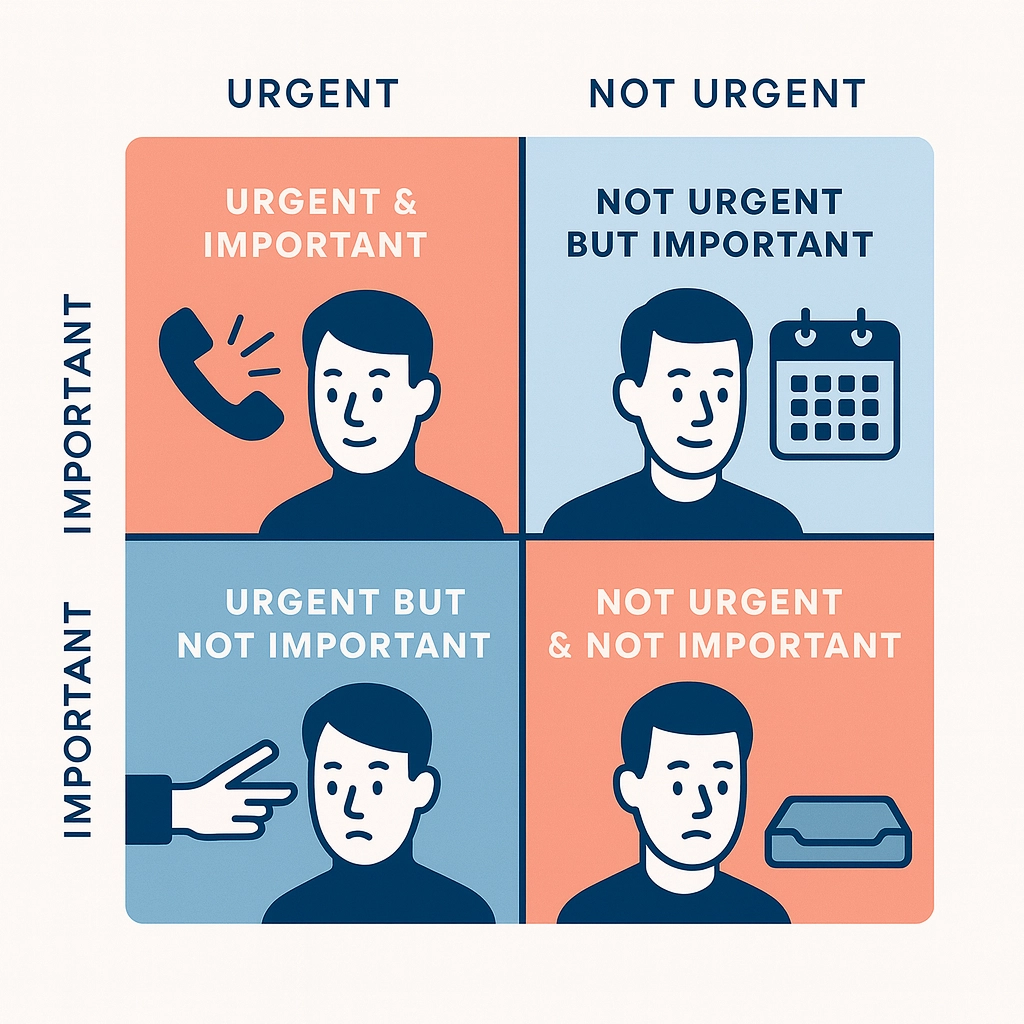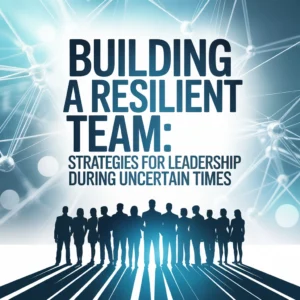Why Prioritisation Has Never Been More Crucial
Every small business leader knows the feeling: an overflowing inbox, phone pinging with urgent requests, and a whiteboard full of big ambitions competing for your attention. But in today’s landscape, with tighter resources and rapid change, mastering the art of prioritisation isn’t just helpful—it’s essential for survival and growth.
So, how do the most effective leaders cut through the noise, make confident decisions, and move their businesses forward without getting caught chasing their tails? This modern playbook distils proven approaches, actionable frameworks, and expert insights so you can make prioritisation your business’s superpower.
1. Core Prioritisation Frameworks for Leaders
The Eisenhower Matrix: Stop Confusing Busy with Effective
Created by President Eisenhower—and beloved by productivity experts—the Eisenhower Matrix helps you sort business tasks by both urgency and importance, so you invest time where it matters most.
- Urgent & Important: Act now. These are the tasks with deadlines or critical impact, like finalising payroll or resolving a customer crisis.
- Important, Not Urgent: Plan for results. Think strategic planning, business development, or strengthening client relationships.
- Urgent, Not Important: Delegate. Often, admin work or distractions are dressed up as emergencies.
- Neither Urgent nor Important: Eliminate. Free up your time for bigger wins.
“What is important is seldom urgent, and what is urgent is seldom important.” – Dwight D. Eisenhower

A visual diagram of the Eisenhower Matrix for quick reference in your office.
Value vs Effort: Modern Decisions for Fast-Moving SMEs
This method is ideal when you’re weighing competing projects. Create a matrix plotting value (the benefit of the outcome) against effort (resources needed):
- High Value, Low Effort: Quick wins. For example, refreshing your Google Business Profile.
- High Value, High Effort: Strategic Priorities. Like implementing a new CRM or website overhaul.
- Low Value, Any Effort: Reconsider or delay.
Regularly review which actions will genuinely move the needle, not just fill your diary.
The Bucket Method: Structure for Juggling Multiple Roles
As a small business owner, you wear many hats. The Bucket Method helps bring order by defining 3–5 ‘buckets’ or focus areas, such as sales, operations, marketing, and people, then assigning a regular proportion of your week to each. Review and refine these allocations to reflect your evolving priorities and prevent any one area from being neglected or overwhelming your diary.
2. Aligning Priorities with Business Growth
The Revenue-Visibility-Innovation Lens
Every task competes for your focus, but not all tasks are equal in driving your business. Prioritise actions by this triad:
- Revenue: Does it lead directly to sales or cash flow improvement?
- Visibility: Will it boost your reputation, referrals, or market positioning?
- Innovation: Will it future-proof your business (e.g., adopting new tech, new service launches)?
Prioritise activities that tick two or three boxes above—and say “no” or “not yet” to those that offer limited strategic value.
The Impact-Ownership Grid
Scrutinise each task by two factors: its potential impact on business results, and how much control you have over the outcome.
- High Impact/High Ownership: Focus your energy here.
- High Impact/Low Ownership: Seek collaboration, partnerships, or find ways to gain more control.
- Low Impact/Any Ownership: Delegate, automate, or eliminate.
This method helps you move out of firefighter mode and into strategic leadership.
3. Time and Energy Optimisation Tactics
Energy Mapping: Work With Your Natural Rhythms
Recognise which parts of the day you are most focused and creative. Block out these slots for high-impact work such as strategic planning or financial reviews, rather than admin or email.
Keep lower-energy periods for routine, process-driven tasks. Over time, this approach will boost your productivity and wellbeing.
Themed Days and Time-Blocking
Batching similar tasks together (“Themed Days”) can dramatically reduce context switching and boost deep focus.
- Examples:
- Marketing Monday
- Finance Friday
- Client Tuesdays
Combine this with time-blocking, assigning specific hours for set tasks, to protect space for high-priority work and avoid a fragmented diary.

Time-blocking schedule example for a typical small business leader’s week.
The Ivy Lee Method: Old School but Gold
At the end of each workday, jot down your six most important tasks for tomorrow, in order of priority. Start with the top task the next morning—don’t move on until it’s done. Repeat. This keeps your focus sharp and avoids “busy work” distractions.
4. Implementing Your Personal Prioritisation System
Audit Your Calendar—Ruthlessly
Regularly review where your time is actually going, not just where you wish it was going.
- Are certain recurring meetings actually moving you forward?
- Which tasks eat up your hours with little to show for it?
Don’t be afraid to cancel, delegate, or restructure your calendar. This is your business’s backbone.
Embrace Technology, But Stay in Control
Digital tools can help automate routine scheduling and reminders. Popular SME-favourites include:
- Todoist
- Trello
- Notion
- Asana
If you’re juggling multiple stakeholders, consider sharing relevant task boards for increased transparency and accountability.
Useful overview: How small businesses can use digital tools to facilitate better leadership
Embed Prioritisation into Your Team Culture
True prioritisation becomes a competitive advantage when everyone buys in.
- Share your prioritisation frameworks with the team.
- Encourage regular check-ins (“Are we working on what matters most?”).
- Celebrate when team members make courageous decisions to say “no” to low-value work.
Explore detailed insights on how fractional and part-time leadership can foster a results-driven culture:
Transformative Leadership on Tap: The Real World Impact of Part-Time Directors
5. Troubleshooting Common Prioritisation Pitfalls
“Everything Feels Urgent” Syndrome
If everything is always urgent, nothing is truly important. Rely on frameworks to reduce knee-jerk reactivity. Also, make space for proactivity, carve out time each week for strategy instead of constant firefighting.
Delegation Blockers
Small business leaders often struggle to let go. Ask yourself:
- Can someone else do this 80% as well as I can?
- What is the worst that could happen if I delegate?
Delegation isn’t about losing control, it’s about multiplying your impact.
Getting Stuck in the Weeds
Review your task list and move yourself up the value chain. The right question: “What is the single most important thing I can do this week to grow my business?”
6. Frequently Asked Questions: Business Leadership and Prioritisation
How can I get the whole team to prioritise better?
Lead by example. Openly explain your own decision-making process and involve your team in regular priority sessions. Tools like Trello or shared Google Docs make priorities transparent for everyone.
Is there a “best” prioritisation method?
No silver bullet exists—most leaders blend several frameworks to suit their business model, team, and stage of growth. Test, tweak, and settle on what works for you.
How often should I review my priorities?
Weekly reviews catch drift and help you reset. Monthly strategy sessions are ideal for larger pivots.
What if unexpected crises keep blowing up my plan?
Budget time for “the unexpected” each day. Over time, robust frameworks reduce the impact of last-minute fire drills.
Final Thought: Prioritisation is a Leadership Skill—Practise & Improve It
Great prioritisation isn’t about squeezing more into your diary, but about ensuring your best energy is spent on what truly propels your business forward.
Want more practical tips? Discover how interim or fractional leadership might supercharge your business focus:
Explore the expert insights at Leadership Services
[References: SmallBizLeader.com; Kolleqtive.com; LifeLabsLearning.com; UnionCountyCOC.com; Leadership-Services.co.uk]


